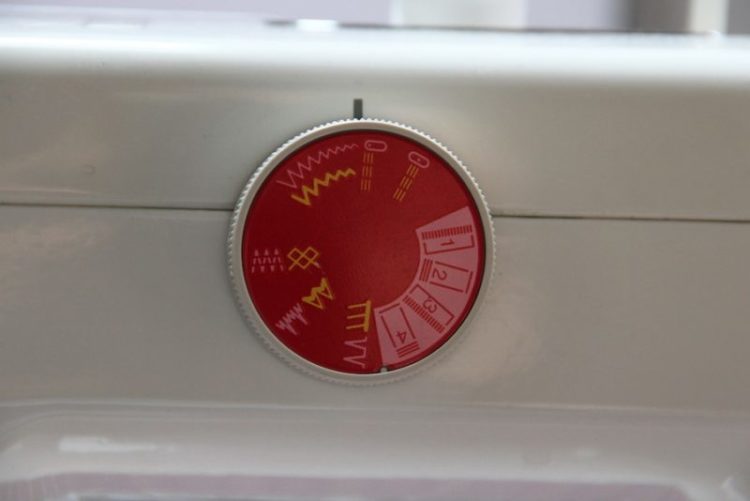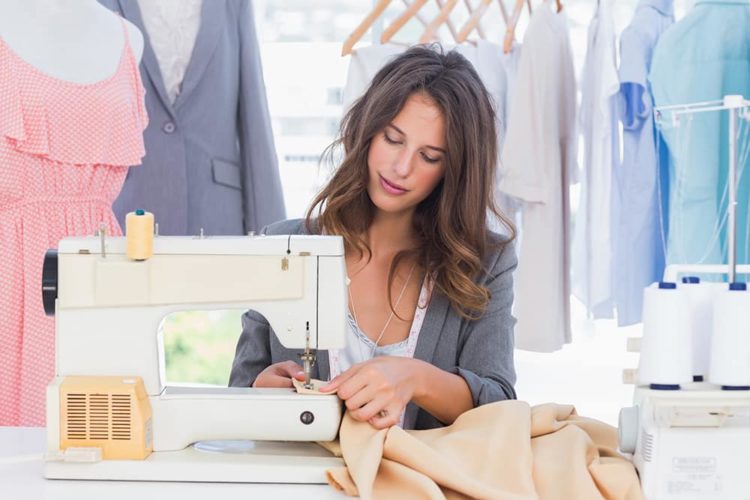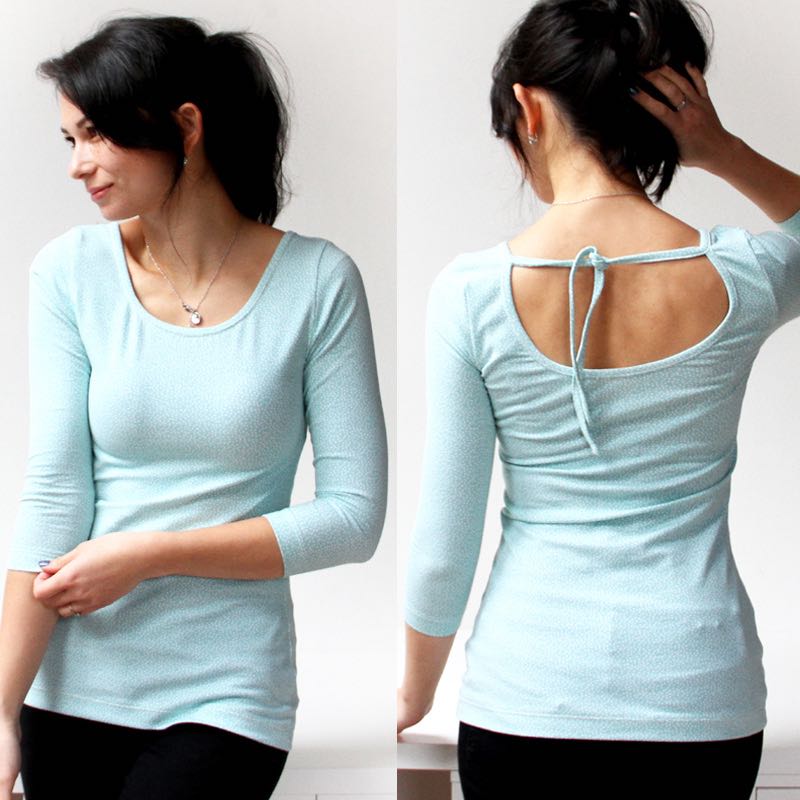Sewing knits without overlock, on a regular sewing machine, can be a bit tricky, but even hobby sewers should not be afraid of it. You just need to follow 4 important steps + 1 bonus step if you can. So let's take a look at how to sew elastic fabrics on regular sewing machine to get the best results.

Step 1 - Choose the right needle
There are many kinds of needles for regular sewing machines. They always differ in what material they are designed for. Detailed description of needle types can be found in this article: Sewing machine needles - choosing the best one for the job
Always use needle designed for elastic materials when sewing knits. It’s usually called “jersey” or “ball point“. In this situation, it doesn't matter which of the two you choose.
Why use special needles? Knits are stretchy (even without addition of elastane and similar materials) thanks to the fact that they are “knitted” by interlocking loops of threads. More information about materials can be found here: Wowen and knitted fabrics. To avoid damaging the fibers of the knit and thus preserve its elasticity, it is necessary to use needles with rounded tips (jersey or ball point). The seams usually begin to “spread apart”, and holes around them appear after a few washing cycles, when a classic sharp needle was used for sewing. That is due to the damage to the fibers.
To sum up, use jersey or ball point needle to sew knits.

Step 2 - Make seams elastic
If you are sewing elastic materials, you need the seams (especially hems - sleeve hems, neck opening, etc.) to be elastic as well. Sewing machines differ, as do fabrics and knits. Therefore, there is no universal recommendation for specific sewing machine settings, it is always necessary to do some testing. In any case, you should choose some elastic stitch for sewing knits.
It can be simple zigzag seam (I recommend using narrow zigzag, but that is up to you) or it can be some type of overcast ‘pinking’ stitch or 3-step straight seam.
3-step seam is a setting in which the machine sews first two straight stitches forwards and the third stitch back and over and over again. It's a bit like hand-stitched back stitch that can stretch slightly because the thread doesn't just go straight forward.
Sewing machine 3-step straight seam works in the same way. You can also use 3-step zigzag seam, which works by sewing 3 stitches in one direction and then 3 stitches to the other direction. At first glance it may look like a classic zigzag, but each "zig" and "zag" is composed of 3 small stitches.
The picture below shows my old sewing machine with a few stitch settings. The narrowest zigzag is selected and the 3-step zigzag is on the far left.

Step 3 - Adjust lower thread (bobbin) tension
Since you need to sew with a flexible stitch, you have to adjust the thread tension accordingly. Usually it is sufficient to decrease the tension of the lower thread, but sometimes it may be necessary to slightly decrease upper thread tension too. It always depends on the particular sewing machine and fabric.
Why is it important to decrease lower thread tension? If one of the above mentioned stitches is selected, the machine adjusts the upper thread automatically. But it doesn’t take into account what material are you sewing. Your sewing machine doesn’t know that your are sewing elastic material and that you want the stitch to be elastic too. Therefore it doesn’t adjust the tension of the lower thread. But you have to decrease the tension of the lower thread so that it also has a little “slack” and allows for seam flexibility. “Elastic” seam with tense lower thread won’t be elastic and the lower thread will break. And you do not want this, so you need to decrease the lower thread tension to make your seams more elastic.

Step 4 - Reduce the foot pressure
Machines usually only have a lower feed, which means that the feed dogs (metal teeth-like ridges) under the throat plate feed the material under the foot, but the material isn’t pushed forward from the top side, so the foot "rolls" some of the material in front of it instead of letting it go behind.
With wowen fabrics, this can be easily solved by holding both layers of fabric with one hand in front of the foot and with the other hand behind the foot, slightly stretching the fabric and smoothly pulling it under the foot. But you can’t do this with knits, because you would stretch and warp the fabric unevenly. So do not pull on the fabric when sewing knits!
Therefore, it is good to reduce foot pressure if your machine allows it. What does it mean? The foot pressure is the force exerted by the foot on the fabric. You don’t want the fabric to slide away under the foot, but default foot pressure is often too high for knits, thus causing the material to be stretched and warped. Reduce foot pressure to avoid this.
(Note: some cheaper or older sewing machines do not have a foot pressure control. I recommend checking the manual of your particular machine. Find out if it has this feature and learn how to set it up. If you can’t control the foot pressure on your machine, then do not underestimate the next step…)
Step 5 - Walking foot (bonus step)
You can buy a walking foot for most types of sewing machines.
Walking foot is used to evenly move both layers of fabric through the machine. Feed dogs are pushing bottom layer and walking foot is pushing the top layer. This ensures that the fabric does not “roll” in front of the foot. It also prevents unnecessary stretching and warping of the fabric and allows you to sew nicer seams. Walking foot is therefore a handy helper, which provides opportunity for getting better results.
How to sew elastic fabrics – Summary
You can achieve unprecedented results with these 4 (or 5) steps. You may not be able to sew as good as you would like to at the first or second try, but keep trying. You should always test the machine settings on the piece of the fabric you are going to use to see how will it go.
Remember - practice makes perfect. Sewing knits (as everything else) is about practice, you are probably going to need to try it a few times to get a hold of it.
Do not forget the most important thing; Sew with love, your machine will know and help you.
Information about sewing elastic fabrics might be useful for sewing t-shirt BALLERINA for example: Pattern for women’s t-shirt BALLERINA.

Check out other interesting tips to help you improve your sewing skills:
- How to assemble the paper pattern - quick and simple way
- How to sew a t-shirt - everything you need to know
Are you struggling with elastic fabrics? Do you have any questions or tips for others? Feel free to tell us below the article in the comment section!
Have a nice day, Peťa
Now that you know how to sew elastic fabrics on an regular sewing machine, how about you download one of my FREE patterns and try it in practice? You can find free to download patterns here:




















